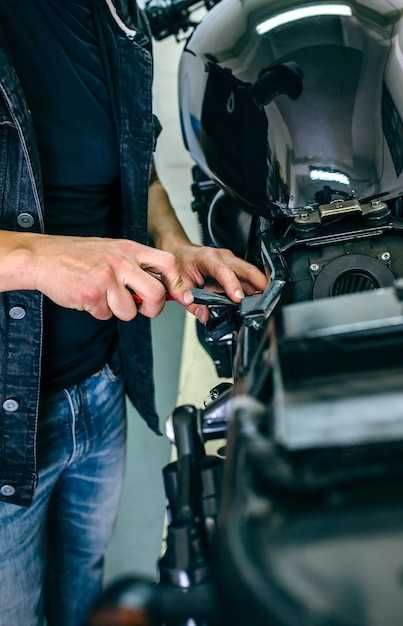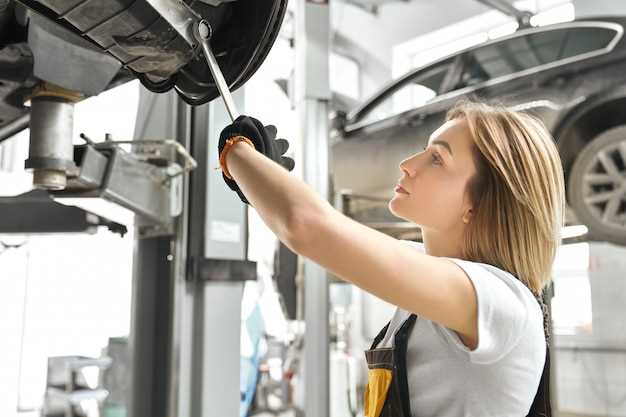
When it comes to enhancing the performance of your BMW, few modifications are as impactful as upgrading the sway bars. These essential components play a critical role in managing body roll during cornering, ensuring that your vehicle remains stable and responsive. By investing in high-quality sway bars, you can significantly improve your car’s handling dynamics, allowing for a more enjoyable driving experience.
BMW vehicles are renowned for their precision engineering and exceptional handling characteristics. However, even the best models can benefit from the right upgrades. The stock sway bars may not provide the optimal balance for aggressive driving or track use. Upgrading to thicker, stiffer sway bars can drastically reduce body roll, giving you greater confidence in tight turns and high-speed maneuvers. This modification not only enhances performance but also contributes to better tire adhesion, increasing safety as you push your BMW to its limits.
Whether you’re a weekend enthusiast or a serious track racer, the right sway bars can transform your BMW’s performance. With various options available, you can tailor your suspension setup to meet your driving style and preferences. From adjustable bars for fine-tuning to fixed options designed for specific applications, there’s no shortage of choices. Upgrading your sway bars is an investment in superior handling, ensuring that your BMW performs at its best, every time you hit the road.
Choosing the Right Sway Bars for Your BMW Model
Selecting the appropriate sway bars for your BMW is essential in enhancing handling performance and overall driving experience. Here are key factors to consider when making your choice:
- Model Compatibility:
Different BMW models have distinct specifications. Verify that the sway bars are designed for your specific model to ensure a proper fit.
- Material Quality:
Opt for sway bars made from high-quality materials, such as steel or aluminum. These materials provide durability and reduce the risk of bending during aggressive driving.
- Bar Diameter:
The diameter of sway bars affects stiffness. Thicker bars generally enhance handling performance by reducing body roll. Consider your driving style and needs when selecting the diameter.
- Adjustability:
Some sway bars offer adjustable settings, allowing drivers to fine-tune their handling characteristics. This feature can be beneficial for those who frequently drive on different road types.
- Installation Difficulty:
Assess whether you can install the sway bars yourself or need professional assistance. Some kits may require specialized tools or skills for mounting.
- Brand Reputation:
Research brands known for producing high-performance sway bars for BMW. Customer reviews and expert recommendations can provide insight into reliability and performance.
Taking the time to choose the right sway bars tailored for your BMW model will lead to significant improvements in handling dynamics, making your driving experience more enjoyable and responsive.
Installation Guide: Steps to Upgrade Your BMW Sway Bars

Upgrading the sway bars on your BMW is a significant step towards enhancing the vehicle’s handling performance. Proper installation ensures optimal function and safety. Follow these detailed steps for a successful upgrade.
1. Gather Necessary Tools and Materials: Before starting, ensure you have the required tools, including a socket set, torque wrench, jack stands, and wheel chocks. Acquaint yourself with the new sway bars you will be installing to understand compatibility and specifications.
2. Prepare Your BMW: Park on a flat surface and engage the parking brake. Loosen the wheel bolts using a socket wrench but do not remove them completely yet. Raise the front or rear of the vehicle with a jack and secure it with jack stands. Always follow safety protocols.
3. Remove the Wheels: Once secured, fully remove the wheel bolts and take off the wheels to gain access to the sway bar assembly. This will provide the necessary space to work efficiently.
4. Disconnect the Old Sway Bars: Locate the sway bars; they are typically connected to the chassis and lower control arms. Using a socket wrench, remove the bolts securing the old sway bars. Take care not to damage surrounding components during this process.
5. Install New Sway Bars: Position the new sway bars in place, ensuring they align with the original mounting points. Hand-tighten the bolts first, then use the torque wrench to tighten them to the manufacturer’s specified torque settings. Proper torque is crucial for stability and performance.
6. Reassemble Suspension Components: If any suspension components were removed during the sway bar replacement, reattach them securely. It’s essential to ensure all connections are tight and secure to maintain vehicle safety.
7. Reattach Wheels: Place the wheels back onto their designated hubs. Hand-tighten the bolts before lowering the vehicle to the ground. Once on the ground, use the torque wrench to tighten the wheel bolts to the recommended settings.
8. Final Checks: Before driving, double-check all connections involved in the installation. Ensure there are no loose bolts or components. A test drive is recommended to assess the new sway bars’ performance and make sure everything functions correctly.
Following these steps carefully will ensure a successful upgrade of your BMW sway bars, enhancing handling performance and overall driving experience.
Tuning and Maintenance Tips for Enhanced Handling with Sway Bars

Upgrading the sway bars on your BMW can significantly improve handling performance. To maximize these benefits, proper tuning and regular maintenance are essential. Begin by selecting the right sway bar stiffness that matches your driving style and intended use, whether it’s daily driving or track performance.
When installing sway bars, ensure that all mounts and bushings are secure. This will prevent unwanted movement that could negatively impact handling. It’s advisable to use high-quality bushings, as they can provide better support and reduce noise compared to stock components.
After the installation, pay attention to your BMW’s alignment. A proper alignment will ensure that the tires make even contact with the road, maximizing the effectiveness of the sway bars. Regular alignment checks are crucial, especially after any suspension modifications.
Routine maintenance is key to longevity and performance. Inspect the sway bars for any signs of wear and tear, such as cracks or rust. Also, check the bushings and end links for any signs of deterioration; replacing these components will help maintain optimal performance.
Finally, consider making adjustments based on driving conditions. If you frequently switch between street driving and racing, adjusting the sway bars can help achieve a balance between comfort and performance. By tuning the stiffness of the sway bars, you can effectively manage body roll and cornering stability. Following these tips will ensure that your BMW delivers superior handling performance for years to come.



